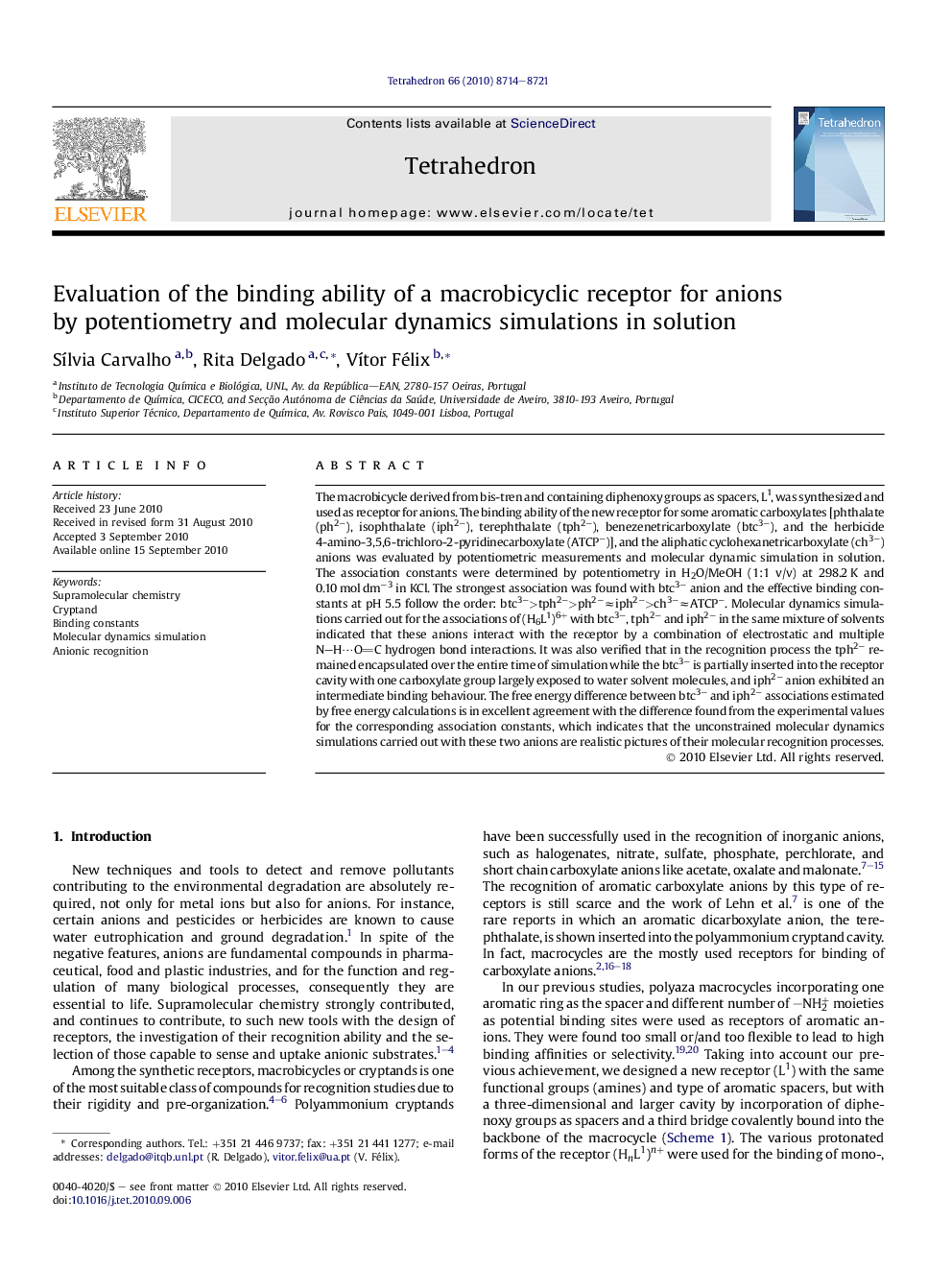| کد مقاله | کد نشریه | سال انتشار | مقاله انگلیسی | نسخه تمام متن |
|---|---|---|---|---|
| 5223139 | 1383478 | 2010 | 8 صفحه PDF | دانلود رایگان |

The macrobicycle derived from bis-tren and containing diphenoxy groups as spacers, L1, was synthesized and used as receptor for anions. The binding ability of the new receptor for some aromatic carboxylates [phthalate (ph2−), isophthalate (iph2−), terephthalate (tph2−), benezenetricarboxylate (btc3−), and the herbicide 4-amino-3,5,6-trichloro-2-pyridinecarboxylate (ATCP−)], and the aliphatic cyclohexanetricarboxylate (ch3−) anions was evaluated by potentiometric measurements and molecular dynamic simulation in solution. The association constants were determined by potentiometry in H2O/MeOH (1:1 v/v) at 298.2 K and 0.10 mol dm−3 in KCl. The strongest association was found with btc3− anion and the effective binding constants at pH 5.5 follow the order: btc3−>tph2−>ph2−≈iph2−>ch3−≈ATCP−. Molecular dynamics simulations carried out for the associations of (H6L1)6+ with btc3−, tph2− and iph2− in the same mixture of solvents indicated that these anions interact with the receptor by a combination of electrostatic and multiple N–H⋯OC hydrogen bond interactions. It was also verified that in the recognition process the tph2− remained encapsulated over the entire time of simulation while the btc3− is partially inserted into the receptor cavity with one carboxylate group largely exposed to water solvent molecules, and iph2− anion exhibited an intermediate binding behaviour. The free energy difference between btc3− and iph2− associations estimated by free energy calculations is in excellent agreement with the difference found from the experimental values for the corresponding association constants, which indicates that the unconstrained molecular dynamics simulations carried out with these two anions are realistic pictures of their molecular recognition processes.
The binding properties between a hexaprotonated macrobicyclic receptor and carboxylate anions were investigated in solution by potentiometry and molecular dynamics simulations.Figure optionsDownload as PowerPoint slide
Journal: Tetrahedron - Volume 66, Issue 45, 6 November 2010, Pages 8714–8721